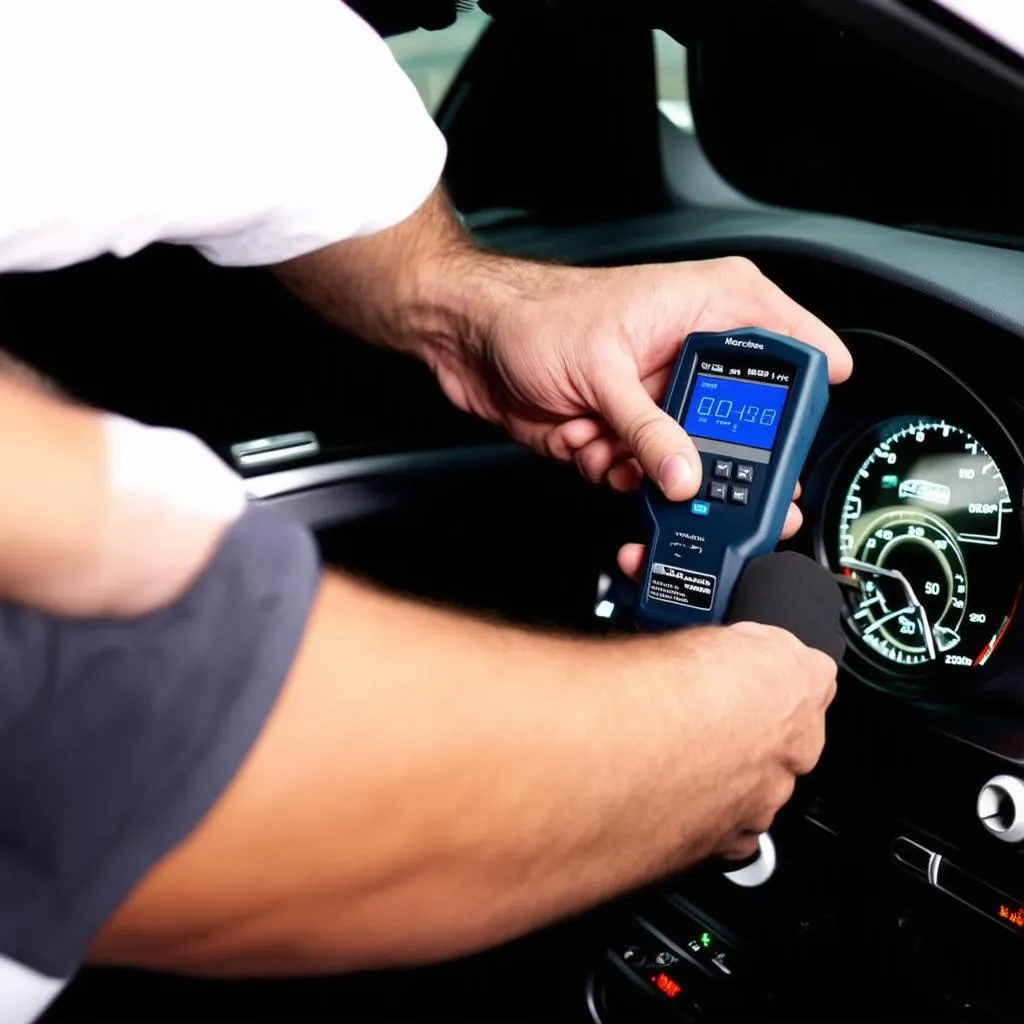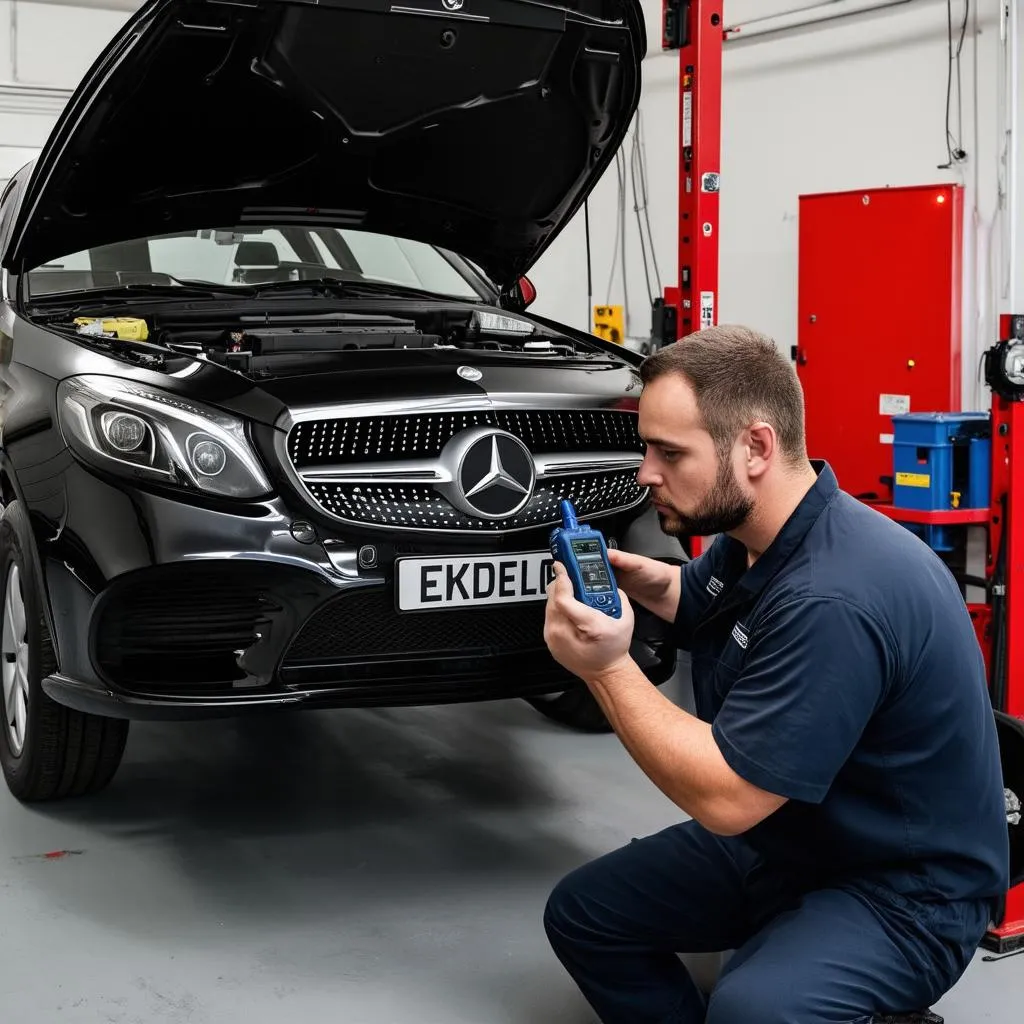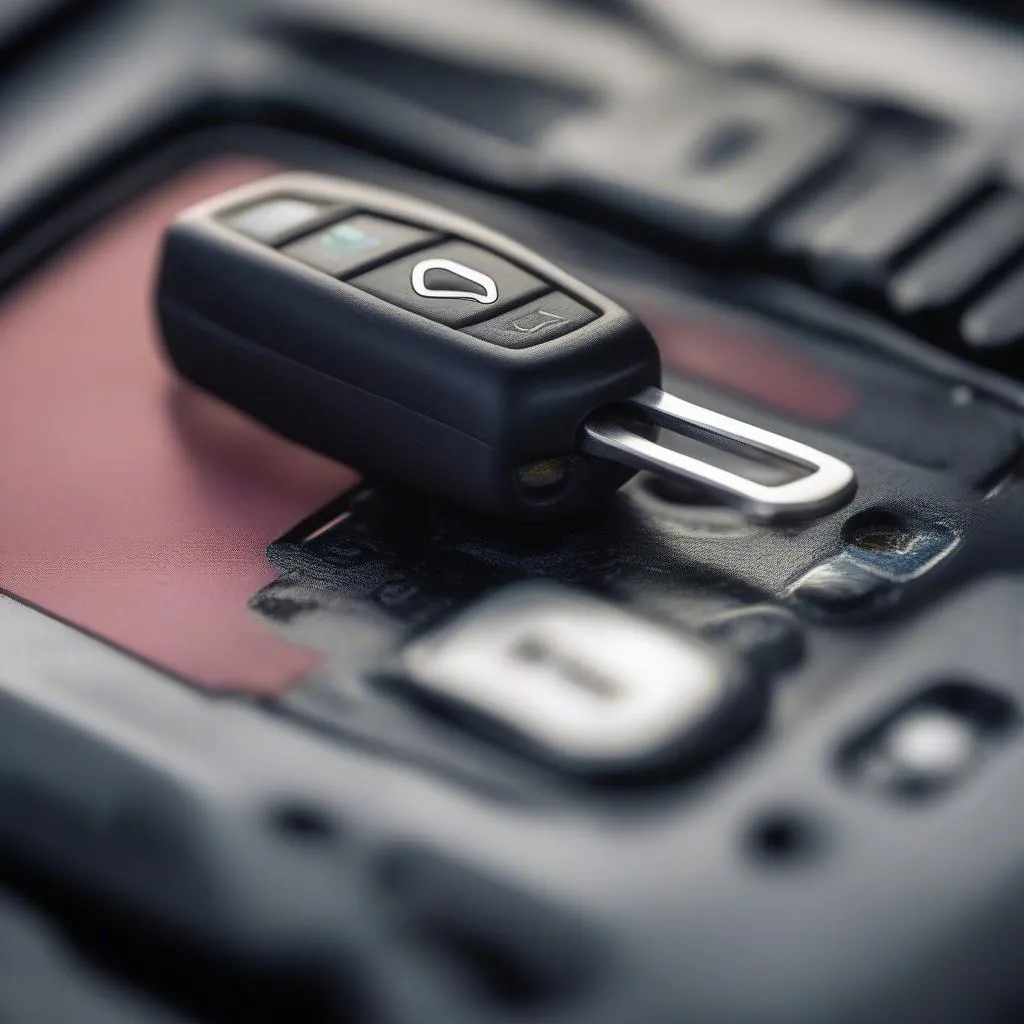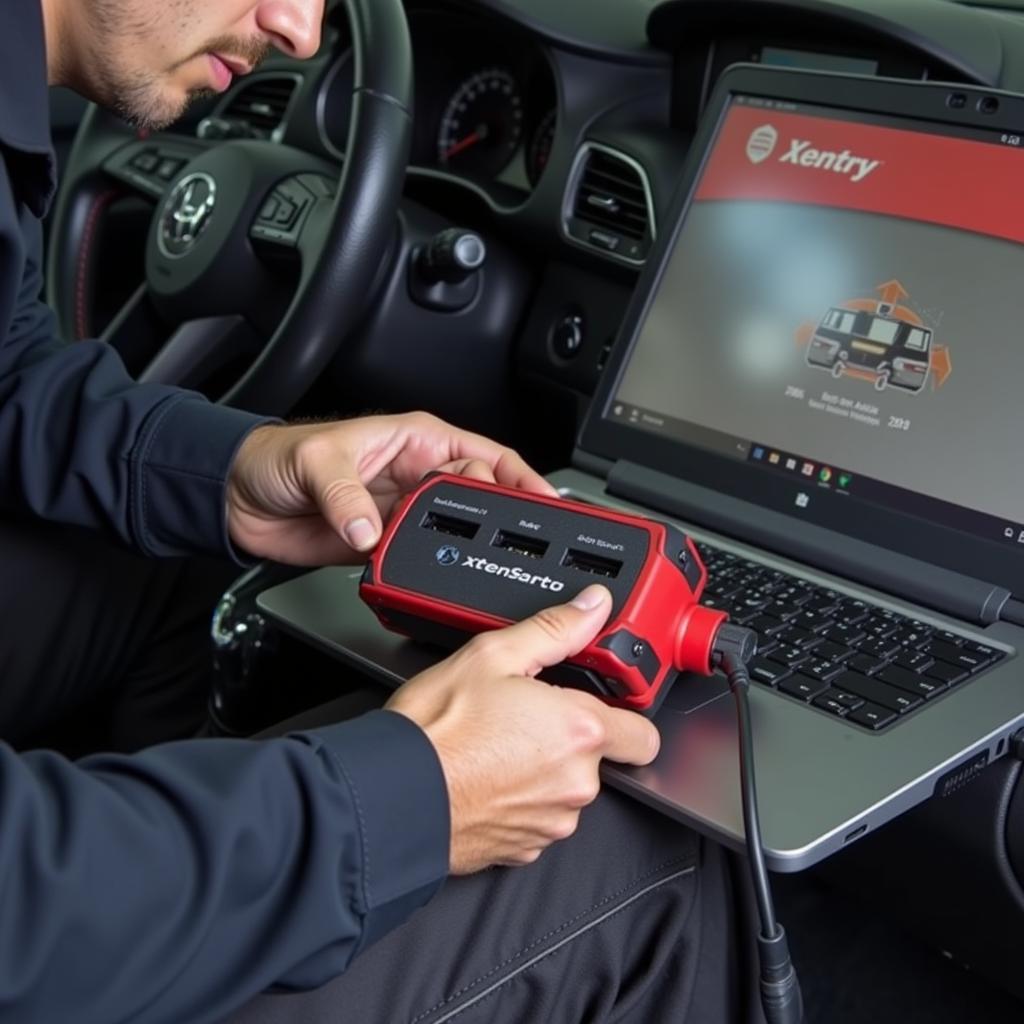The world of automotive diagnostics can seem complex, especially for owners of older Mercedes-Benz vehicles equipped with the OBD1 system. Unlike their modern OBD2 counterparts, these systems require a specialized tool: a Mercedes OBD1 Diagnostic Code Reader. These handy devices act as a bridge between you and your car, translating those cryptic error codes into understandable information. Whether you’re a seasoned DIY mechanic or just starting, understanding and using an OBD1 code reader can be your ticket to easier, more affordable car maintenance.
What is a Mercedes OBD1 Diagnostic Code Reader Tool?
Before we dive in, let’s break down what a “Mercedes OBD1 Diagnostic Code Reader Tool” actually is. Essentially, it’s a specialized device designed to communicate with the onboard computer of Mercedes vehicles manufactured before 1996. These vehicles utilize the OBD1 system (On-Board Diagnostics generation 1), which, unlike the standardized OBD2 system introduced later, varies significantly between models and even model years.
Here’s why having a dedicated OBD1 reader is crucial:
- Model Specific Compatibility: OBD1 systems were not standardized, meaning a reader designed for one Mercedes model might not work on another. Always ensure you choose a reader specifically designed for your car’s year and model.
- Decoding Cryptic Codes: Your Mercedes’ computer stores diagnostic information as codes. An OBD1 reader retrieves these codes, which can then be interpreted to identify engine problems, transmission issues, emissions-related faults, and more.
 Mercedes OBD1 Diagnostic Tool
Mercedes OBD1 Diagnostic Tool
Why You Need a Mercedes OBD1 Diagnostic Code Reader
- Save Money: Diagnosing car problems at a mechanic can be expensive. An OBD1 reader empowers you to identify many issues yourself, saving you potential trips to the shop for minor problems.
- Early Detection: Identifying problems early can prevent minor issues from escalating into major (and costly) repairs down the line.
- DIY Empowerment: For the mechanically inclined, an OBD1 reader opens the door to tackling repairs and maintenance yourself, giving you a deeper understanding of your Mercedes.
Choosing the Right Mercedes OBD1 Code Reader
Navigating the world of OBD1 readers can seem daunting. Here are some key factors to keep in mind:
- Model Compatibility: This is paramount. Double-check that the reader you choose explicitly states compatibility with your specific Mercedes model year.
- Functionality: Some readers simply retrieve codes, while others offer more advanced features like live data streaming, component activation for testing, and code clearing capabilities.
- Ease of Use: Look for readers with clear, easy-to-read displays and user-friendly interfaces.
“It’s crucial to invest in a quality OBD1 code reader from a reputable brand. While it might be tempting to go for the cheapest option, a reliable tool will save you frustration and potentially inaccurate readings in the long run.” – Dr. Emily Carter, Automotive Engineer & Author of “Understanding Your Car’s Computer”
 Mechanic Diagnosing Mercedes
Mechanic Diagnosing Mercedes
How to Use a Mercedes OBD1 Code Reader
While the exact process may vary slightly depending on your specific reader model and car, here’s a general guide:
- Locate the Diagnostic Port: In most Mercedes vehicles with OBD1, the diagnostic port is a 38-pin connector often located under the hood.
- Connect the Reader: Turn off your car’s ignition. Connect your OBD1 reader to the diagnostic port.
- Turn on the Ignition: Turn the key to the “on” position but don’t start the engine.
- Retrieve Codes: Follow the instructions provided with your reader to access and retrieve the stored diagnostic trouble codes.
- Interpret the Codes: Once you have the codes, you can refer to a code list specific to your Mercedes model (often found online or in repair manuals) to understand their meaning.
- Clear the Codes: After addressing the issue, use your reader to clear the codes from the system.
FAQs about Mercedes OBD1 Diagnostic Code Readers
Q: Can I use a generic OBD2 reader on my Mercedes with OBD1?
A: Unfortunately, no. OBD1 and OBD2 systems are not compatible. You will need a reader specifically designed for Mercedes OBD1 systems.
Q: Where can I find a reliable OBD1 code reader for my Mercedes?
A: Reputable online retailers specializing in automotive diagnostic tools are a good place to start. Be sure to check for compatibility with your specific model. Websites like Cardiagtech offer a variety of diagnostic tools suitable for different Mercedes models, including those with OBD1 systems.
Q: What do I do after reading the codes?
A: Once you have the codes, research their meaning online or consult a repair manual. This will give you insight into the potential problem area.
Taking Control of Your Mercedes’ Health
Investing in a Mercedes OBD1 Diagnostic Code Reader is an investment in your car’s longevity and your peace of mind. With the ability to diagnose problems early and potentially tackle repairs yourself, you’ll be well-equipped to keep your Mercedes running smoothly for years to come.
Need further guidance on choosing the right diagnostic tools for your Mercedes? Don’t hesitate to reach out to the experts at Cardiagtech. We’re here to help you keep your Mercedes in peak condition.


